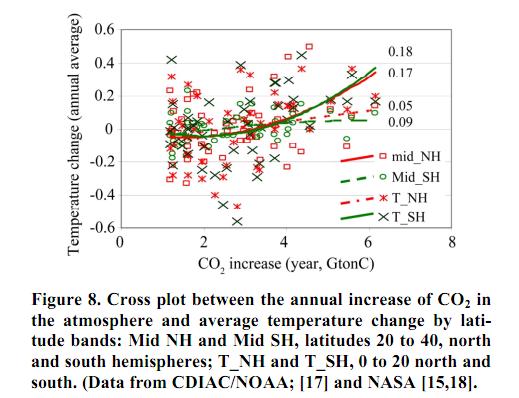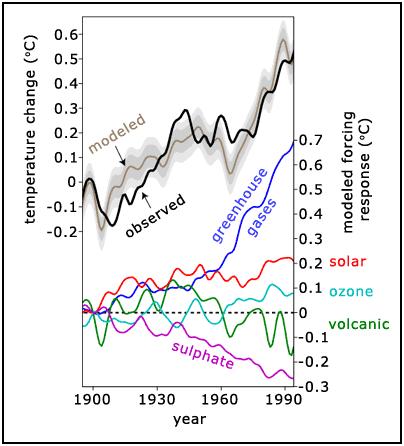 Arguments
Arguments
 Software
Software
 Resources
Comments
Resources
Comments
 The Consensus Project
The Consensus Project
 Translations
Translations
 About
Support
About
Support


Latest Posts
- Skeptical Science New Research for Week #49 2025
- Climate Adam & Dr Gilbz - Paris Climate Agreement At 10: Did It Do Anything?
- Fact brief - Does the recent slowdown in Arctic sea-ice extent loss disprove human-caused warming?
- Why the chemtrail conspiracy theory lingers and grows – and why Tucker Carlson is talking about it
- 2025 SkS Weekly Climate Change & Global Warming News Roundup #48
- Skeptical Science New Research for Week #48 2025
- Consensus machines
- Just have a Think - How an African energy revolution could save ALL of us.
- A girl’s grades drop every summer. There’s an alarming explanation.
- 2025 SkS Weekly Climate Change & Global Warming News Roundup #47
- Fact brief - Are changes in solar activity causing climate change?
- Skeptical Science New Research for Week #47 2025
- Exploring newly released estimates of current policy warming
- Climate Adam - Why the Climate Crisis is a Health Crisis
- Super pollutants are trendy, but we should be careful how we use them
- 2025 SkS Weekly Climate Change & Global Warming News Roundup #46
- Skeptical Science New Research for Week #46 2025
- On the Gates climate memo
- Climate Adam - Climate Scientist responds to Bill Gates
- Five ways Joe Rogan misleads listeners about climate change
- 2025 SkS Weekly Climate Change & Global Warming News Roundup #45
- Skeptical Science New Research for Week #45 2025
- Debunking Joe Rogan, Dick Lindzen, and Will Happer
- Fact brief - Does cold weather disprove human-caused climate change
- Climate change strengthened Hurricane Melissa, making the storm’s winds stronger and the damage worse.
- 2025 SkS Weekly Climate Change & Global Warming News Roundup #44
- Skeptical Science New Research for Week #43 2025
- Climate Adam - Can Solar Halt the Desert?
- Fact brief - Is there empirical evidence for human-caused global warming?
- A “controversial” methane metric?
Archived Rebuttal
This is the archived Intermediate rebuttal to the climate myth "Soares finds lack of correlation between CO2 and temperature". Click here to view the latest rebuttal.
What the science says...
| Soares looks at short-term trends which are swamped by natural variations. Increasing CO2 causes a gradual long-term warming trend which is smaller than the short-term variations. The long-term correlation between CO2 and temperature is well establis |
A recent paper in an obscure journal (Soares, 2010) used correlations between temperatures and CO2 concentrations to conclude that;
"The absence of immediate relation between CO2 and temperature is evidence that rising its mix ratio in the atmosphere will not imply more absorption and time residence of energy over the Earth surface. This is explained because band absorption is nearly all done with historic CO2 values."
Soares looks at correlations between change in CO2 and change in temperature for a month to a few years. He doesn't find a correlation between short term CO2 changes and temperature changes in the following months. His Figure 8 shows the change in temperature or CO2 from one year to the next.

Do we live in Soares’ world where CO2 isn’t causing warming, or in the world of mainstream physics where theory and measurements show increased CO2 heating? What does mainstream physics expect to see in the above graph?
Firstly it expects atmospheric temperatures to change regularly: natural cycles like El Nino transfer heat from the oceans and can change atmospheric temperature by up to 0.4 °C in a year causing the big vertical spread.
The graph below is based on Meehl et al, 2004 and shows a climate model estimate of how much global warming was expected from greenhouse gases for the past century: always less than 0.02 °C/year - so small that the noise effectively hides the incline if you only look at year to year changes. Fortunately, very simple statistical techniques work around this.
Some rough calculations using the NASA global data shows that to detect the expected CO2 global warming for the past 40 years at 95% confidence would require about 160 years of measurements - and hundreds more measurements to detect the CO2 signal when it is smaller.

The next trick is to implicitly assume that nothing else shows a warming or cooling pattern: but we know that there is. From the 1940s to the 1970s we pumped enough reflective aerosols into the atmosphere to temporarily halt global warming by 'global dimming' (Ramanathan et al, 2001).
This is like putting a pan of water over a lit gas stove and then dropping in an icepack big enough to cool the water. Soares would say the cooling shows that burning gas can’t heat water, but mainstream science says that a big pack of ice temporarily masks the heating and that burning gas does, in fact, make water warmer than it would otherwise be. Importantly, you can account for the ice and determine whether the heat is on and other scientists would do this.
Soares’ method is like searching for a needle in a huge haystack by picking a handful of hay rather than using a magnet. You almost certainly wouldn’t find the needle even if it was there, so to claim you’ve disproved its existence when other scientists have found it with their magnets is simply stunning.
Updated on 2011-01-17 by MarkR.
THE ESCALATOR

(free to republish)
























































